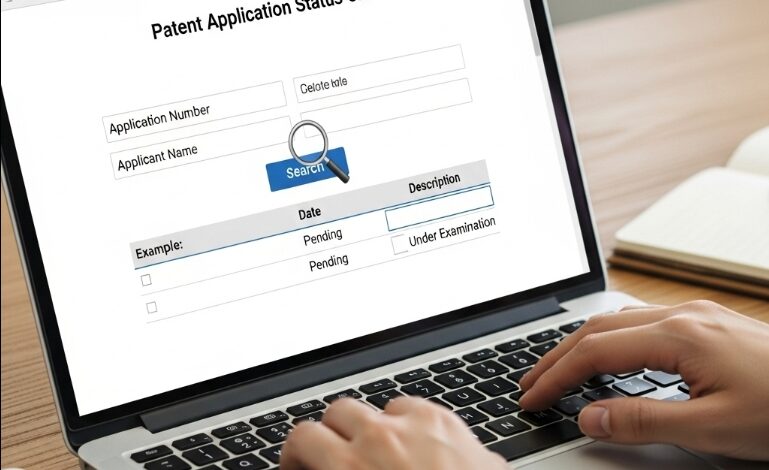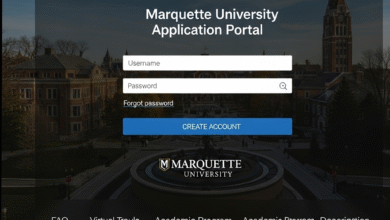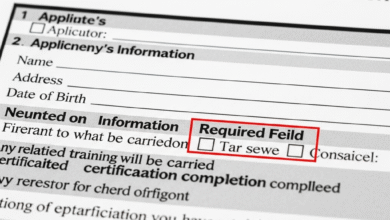How to Check Status of Patent Application
Your Essential Guide: How to Check Status of Patent Application for Students, Researchers & Innovators

How to Check Status of Patent Application
Your Essential Guide: How to Check Status of Patent Application for Students, Researchers & Innovators
Feeling that mix of excitement and nervous anticipation while waiting to hear about your patent application? You’re not alone. Whether you’re a graduate student at MIT perfecting a biomedical device, a robotics researcher at ETH Zurich, an aspiring entrepreneur at NUS launching your startup, or part of a university tech transfer office managing dozens of inventions, knowing how to check status of patent application is absolutely crucial. It’s not just about satisfying curiosity – it directly impacts research funding, commercialization timelines, academic publications, and your future career trajectory. Forget confusing legal jargon and endless searching! This comprehensive 2024 guide, designed specifically for the academic and research community, breaks down the exact steps to check patent application status globally, using official, free tools, and understanding what those statuses really mean for your work. Let’s demystify the process!
Why Knowing “How to Check Status of Patent Application” Matters in Academia & Research
-
Funding & Grant Compliance: Many research grants (like NSF, ERC, Horizon Europe) require regular reporting on intellectual property (IP) outcomes. Knowing the exact status (“Allowed,” “Rejected,” “Pending”) is mandatory. Example: Stanford’s Office of Technology Licensing meticulously tracks statuses for thousands of disclosures.
-
Publication Strategy: Publishing research related to a pending patent requires careful timing. Knowing if your application is “Published” (usually 18 months after filing) or if an “Office Action” (examiner’s report) has been issued is critical to avoid jeopardizing patent rights. University Review Highlight: “Premature publication is the single biggest patent mistake we see from brilliant researchers,” notes a senior IP manager at Imperial College London.
-
Licensing & Startup Launch: Tech transfer offices (TTOs) and student entrepreneurs need real-time status to negotiate licenses, attract investors, or launch spin-offs. An “Allowed” status significantly boosts valuation. User Review Insight: “Investors always ask for the latest patent status update before committing funds,” shares a founder from University of Cambridge’s entrepreneurship program.
-
Thesis & Academic Progress: For PhD students and post-docs, patent status can be tied to thesis submission, graduation requirements, or securing that next post-doc position. Knowing it’s “Granted” is a major career milestone.
-
Collaboration Management: International research projects often involve multiple inventors across different countries. Tracking corresponding applications via the PCT (Patent Cooperation Treaty) system is essential for coordination. Global Perspective: Universities like Tsinghua and UTokyo manage complex portfolios requiring global status checks.
Your Primary Toolbox: Official Patent Office Databases (Free Access!)
The only definitive sources for checking patent application status are the official patent office databases. Relying solely on commercial services or law firm portals can lead to delays or inaccuracies. Here’s where to go:
-
United States Patent and Trademark Office (USPTO):
-
Tool: Patent Center (Replacing the older PAIR system).
-
How to Check Status of Patent Application:
-
Go to:
patentcenter.uspto.gov -
Create a free USPTO.gov account (essential for full access).
-
Search by:
-
Application Number: (e.g., 17/123,456)
-
Patent Number: (If granted, e.g., US 11,222,333 B2)
-
Publication Number: (e.g., US 2023/0123456 A1)
-
Inventor Name: (Less precise, but possible)
-
-
Key Status Info Found: Filing Date, Application Type (Utility, Design, Plant), Art Unit (Technology Area), Examiner Name, Current Status (e.g., “Docketed New Case,” “Non-Final Rejection Mailed,” “Notice of Allowance Mailed,” “Patented Case”), Transaction History (every letter sent/received), Document Images (Office Actions, Responses, Notices). Crucially, this is the official record for your patent application status.
-
-
Google Rating Note: Patent Center receives praise for consolidation but some user reviews mention an initial learning curve compared to old PAIR.
-
-
European Patent Office (EPO):
-
Tool: European Patent Register & Espacenet.
-
How to Check Status of Patent Application:
-
Go to:
register.epo.org(For detailed legal status/procedural steps) ORworldwide.espacenet.com(For bibliographic data and documents). -
Search by:
-
Application Number: (e.g., EP22123456)
-
Publication Number: (e.g., EP 4 123 456 A1)
-
Patent Number: (e.g., EP 4 123 456 B1)
-
-
Key Status Info Found (Register): “Proceedings & Decisions” tab shows every step – from filing to grant/refusal, including search reports, examination requests, communications, oppositions, and appeal status. The “Legal Status” tab gives a high-level summary (e.g., “Application published,” “Examination in progress,” “Patent granted”). Essential for tracking the rigorous European process.
-
-
User Review Insight: Highly regarded for transparency and detail, especially useful for universities filing across multiple EPC states.
-
-
World Intellectual Property Organization (WIPO) – For PCT Applications:
-
Tool: PATENTSCOPE.
-
How to Check Status of Patent Application (PCT Phase):
-
Go to:
patentscope.wipo.int -
Search by:
-
PCT Application Number: (e.g., PCT/US2023/012345)
-
Publication Number: (e.g., WO 2024/123456 A1)
-
-
Key Status Info Found: International Filing Date, Priority Data, International Search Report (ISR) & Written Opinion (WO), International Publication Date, Status of entry into National/Regional phases. Critical for managing the international gateway before entering individual countries.
-
-
University Relevance: Most university international filings start with a PCT application. PATENTSCOPE is the central hub for this 30-month period.
-
-
Other Major Patent Offices (Examples):
-
Japan Patent Office (JPO): J-PlatPat (
jplatpat.inpit.go.jp) – Offers English interface. Search by App/Pat/Pub number. -
China National Intellectual Property Administration (CNIPA): CPRS Public System (English interface available, search can be trickier but possible by number).
-
Korean Intellectual Property Office (KIPO): KIPRIS (
eng.kipris.or.kr) – Good English support. -
United Kingdom Intellectual Property Office (UKIPO): Ipsum (
www.ipo.gov.uk/p-ipsum) – Post-Brexit UK filings. -
Canada (CIPO): Canadian Patents Database (
ised-isde.canada.ca/cipo/patent/...).
-
Step-by-Step: How to Check Status of Patent Application (USPTO Patent Center Example)
Let’s make this concrete. Imagine you’re a researcher at the University of Michigan tracking your team’s AI algorithm patent. Here’s the exact process to check patent application status:
-
Navigate: Go to
patentcenter.uspto.gov. -
Log In: Sign in with your USPTO.gov account. Creating one is free and necessary.
-
Search:
-
Best Option: Enter the Application Number (e.g., 17/890,123) in the search bar. Hit Enter/click search.
-
Alternative: Use the Publication Number (e.g., US 2023/0345678 A1) or Patent Number if granted.
-
-
Locate Your Application: Your application will appear in the results list. Click on the Application Number link.
-
The “Application Data” Tab (Your Status Dashboard):
-
“Status” Field: This is your high-level patent application status. Examples:
-
Docketed New Case: Received, not yet assigned. -
Awaiting Examination: In queue for an examiner. -
Non-Final Rejection Mailed: First substantive report from examiner (common – not the end!). -
Final Rejection Mailed: Examiner maintains rejection after your response. -
Advisory Action Mailed: After Final Rejection, before appeal. -
Notice of Appeal Filed: Appeal process initiated. -
Notice of Allowance Mailed: Examiner says YES! Patent will grant if fees paid. -
Patented Case: Patent has officially granted. -
Abandoned: Application closed (e.g., fees unpaid, no response to Office Action).
-
-
“Attorney/Agent” Field: Confirms who is officially representing the application (often the university’s outside counsel or TTO attorney).
-
“Group Art Unit” & “Examiner”: Shows the technology area and specific examiner handling it.
-
“Last Location” & “Estimated Proceeding” Date: Gives a rough timeline indicator.
-
-
The “Documents & Transactions” Tab (The Detailed History):
-
This is GOLD. Lists EVERY significant event in chronological order.
-
See exact mailing dates of Office Actions (OAs), your responses, Notices (like Allowance), Petitions, and Fee payments.
-
Click the “Document Code” (e.g., “CTNF” for Non-Final Rejection) to view and DOWNLOAD the actual PDF documents sent by the USPTO or your attorney. Vital for understanding examiner objections.
-
-
The “Patent Term Adjustments” Tab: Calculates any time added to the patent term due to USPTO delays (more relevant post-grant).
-
The “Maintenance Fees” Tab: For granted patents, tracks when fees are due to keep it alive (3.5, 7.5, 11.5 years).
Understanding Common Patent Statuses & What They Mean for Your Research
-
“Published” (US) / “A Publication” (EP): Application is public (~18 months after first filing). You can now talk freely about it, cite it, but competitors can see it too. Crucial milestone for academic papers.
-
“Non-Final Rejection” (US) / “Communication under Article 94(3) EPC” (EP): The examiner’s first substantive report outlining objections (prior art, clarity, patentability). This is NORMAL. Your TTO/attorney will coordinate a detailed response (often involving you, the inventor!). *Average university application receives 2-3 rejections.*
-
“Final Rejection” (US): Examiner wasn’t persuaded by your first response. Options: 1) File a Request for Continued Examination (RCE) with more arguments/amendments (costs $$), 2) Appeal, 3) Abandon. Requires strategic discussion with your TTO.
-
“Notice of Allowance” (US) / “Intention to Grant” (EP): The examiner is satisfied! Upon paying the issue fee (US) or completing formalities (EP), the patent will grant. Time to celebrate and notify your grant officer/sponsor!
-
“Abandoned”: The application is closed. Reasons: Failure to respond to an Office Action, non-payment of fees, or explicit withdrawal. University TTOs actively manage dockets to prevent unintentional abandonment.
-
“Patented” / “Granted”: Congratulations! The patent is officially issued. Ensure your university’s TTO records this for licensing and compliance.
Pro Tips for Academics & Researchers: Beyond Basic Status Checks
-
Set Up Email Alerts: Most patent offices (USPTO Patent Center, EPO Register) allow you to subscribe to email notifications for specific applications. Get automatic updates on any status change or new document. Essential for busy researchers!
-
Understand “Continuation” Applications: Universities often file follow-on applications (Continuations, Divisionals, CIPs) related to the original invention. Track all related application numbers – the status of one might impact others.
-
Leverage Your University TTO: They are your expert resource! TTOs have dedicated staff and sophisticated docketing software tracking every application. Schedule regular check-ins, especially before publication or major grant reports. User Review: “Our TTO liaison is invaluable for translating patent legalese into actionable steps for the lab,” says a bioengineering professor.
-
Communicate with Your Patent Attorney: Don’t hesitate to ask your attorney (often engaged by the TTO) for clarification on a status or Office Action. They work for you/in your university’s interest.
-
Global Portfolio Tracking: For inventions filed in multiple countries (common via PCT), you need to check status of patent application individually in each target country after the PCT phase (usually around 30-31 months). Your TTO or attorney will manage this complex process.
-
Beware of Scams: Upon publication or grant, you may receive official-looking (but fraudulent) letters demanding fees for “patent registry” services. Only pay fees directly to the official patent office or through your authorized attorney/TTO.
University Tech Transfer Offices (TTOs): Your Central Hub for Patent Status
-
Role: University TTOs manage the entire patenting process: evaluating disclosures, filing applications, engaging attorneys, paying fees, prosecuting applications, licensing, and enforcing patents.
-
How They Track Status: TTOs use specialized IP management software (like Wellspring Sophia, Anaqua, Lecorpio) providing real-time dashboards for hundreds of applications, automated docketing for deadlines, and comprehensive reporting.
-
Your Interaction: As an inventor, you will:
-
Disclose your invention formally.
-
Work with TTO staff/attorneys to prepare the application.
-
Review draft responses to Office Actions (your technical input is critical!).
-
Be informed of key status changes (publication, allowance, grant).
-
Participate in licensing discussions.
-
-
Why TTOs Excel: “Managing a university patent portfolio requires constant vigilance across dozens of jurisdictions and complex deadlines. Our software and dedicated staff ensure nothing falls through the cracks,” explains a Director of a top-10 US university TTO.
Conclusion: Empower Yourself with Knowledge
Mastering how to check status of patent application is no longer a task solely for lawyers or university administrators. As a student, researcher, or innovator within the global academic ecosystem, this knowledge empowers you. It allows you to actively participate in protecting your intellectual contribution, strategically plan your research and publications, meet compliance requirements, and maximize the impact of your discoveries. The official patent office databases (USPTO Patent Center, EPO Register, WIPO PATENTSCOPE) are powerful, free resources at your fingertips. Combine this self-service capability with proactive communication with your university’s Tech Transfer Office and your patent counsel. By staying informed about your patent application status, you take control of a vital aspect of your academic and innovative journey. Now go check that status with confidence!



